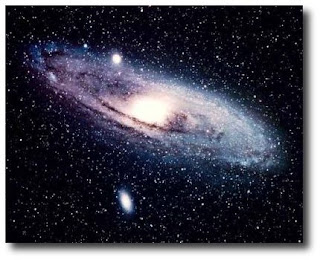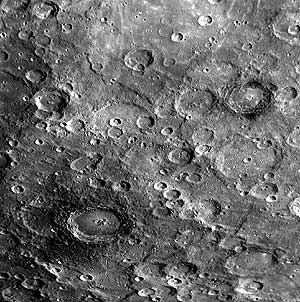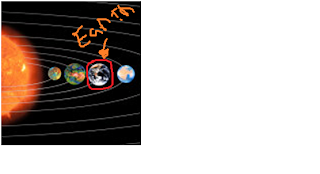Space
How is the space like, no one know it, in this blog we will give you an idea of how is it.
jueves, 25 de julio de 2013
NASA?
Satellites:
 Any abject that orbits an other object is called satellite Moons orbiting planets are natural satellites, artificial ones are the man - made ones.
Any abject that orbits an other object is called satellite Moons orbiting planets are natural satellites, artificial ones are the man - made ones.Th Earth artificial Satellites have many different uses, some gather information about the weather, other ones pick the radio, phone, TV... signal, and other many different us
es that make our lives easier.
The Huble Space Telescope
.jpg) The Huble Space Telescope ( HST ) is the first major telescope, itá an optical telescope launched in 1900, the HST orbirts the Earth at a distance of 612km (380 milles) it´s about the size of a bus, the astronomers send signals from the Earth to the HST to take pictures of galaxies and planets. The HST energy comes from the sun.
The Huble Space Telescope ( HST ) is the first major telescope, itá an optical telescope launched in 1900, the HST orbirts the Earth at a distance of 612km (380 milles) it´s about the size of a bus, the astronomers send signals from the Earth to the HST to take pictures of galaxies and planets. The HST energy comes from the sun.
FACT: after the HST was launched and the astronomer and scientifics looked at the pictures the realiced that the HST was sending back blurred images, there was a fault in the telescope, so in 1993 they sended some people to fis it and naw the HST send us amazing pictures of the space.
jueves, 22 de noviembre de 2012
The solar system

The solar system consists of our nearest star (the Sun) and the eight planets which orbit around it, together with their moons, other small celestial bodies and a belt of asteroids, also there are 3 dwarf planets. The Sun is at the centre of our solar system. All other bodies in the Solar System orbit the Sun, most of them taking many years to do so.
viernes, 16 de noviembre de 2012
Units of measure
The universe is so big that the typical units of measure that we use
on Earth to calculate distances (kilometers, miles,…) are too small.
Because of this we use:
Astronomical units (AU): It is equivalent to the average distance
from the Earth to the Sun. About 150 million km. Generally used to
measure distances within the Solar System.
Light year. Distances in space are so vast that they are measured in
light years – the distance that light travels in a year. Light travels at
a speed of roughly 300 000 km per second. A light year is therefore
about 9 500 000 000 000 km
on Earth to calculate distances (kilometers, miles,…) are too small.
Because of this we use:
Astronomical units (AU): It is equivalent to the average distance
from the Earth to the Sun. About 150 million km. Generally used to
measure distances within the Solar System.
Light year. Distances in space are so vast that they are measured in
light years – the distance that light travels in a year. Light travels at
a speed of roughly 300 000 km per second. A light year is therefore
about 9 500 000 000 000 km
jueves, 15 de noviembre de 2012
Seasons
Seasons are caused by the Earth´s rotation around a tilted axix and the Earth´s revolution.
When the northern hemisphere is tilted towards the Sun it receives more solar energy than the southern hemisphere, it is summer in the northern hemisphere and winter in the Southern. The Summer solstice is the day with more daylight hours in the year, 21st of June.
As the Earth continues on its orbit at the Sun both hemispheres receive equal amount of sunlight. Days become longer in the southern hemisphere and shorter northern hemisphere, it is Autumn in the northern hemisphere. The two days in the year when the day and the night last the same are the equinoxes : 21st march, 22nd september.
As the Earth continues on its orbit at the Sun both hemispheres receive equal amount of sunlight. Days become longer in the southern hemisphere and shorter northern hemisphere, it is Autumn in the northern hemisphere. The two days in the year when the day and the night last the same are the equinoxes : 21st march, 22nd september.
Gravitation force:
The gravitational force of stars and planets depends on their mass. The greater the mass of an object, the greater the gravitational force that it exerts. The distance between two objects also affects their gravity: the further apart they are, the weaker the force.
Natural satallite
Is a solid rocky object that orbits a planet. The Earth has only one, but other planets can have over 20. These moons give out no light and are only visible when they reflect sunlight.
viernes, 9 de noviembre de 2012
Asteroid
An asteroid is a rocky object wich is larger than a meteorid and smaller than a planet. Most are found in a belt between the orbits of Mars and Jupiter (it´s called: Asteroid belt)
Meteor
 A meteor is a small body, such as rock or piece of dust moving throught space, they range of large rocks weighining several tons to small grains of dust. As they enter in the Atmosphere of a planet they heat up as a result of friction as they move throught the gases this can make them glow and gives them their nickname of chooting stars.
A meteor is a small body, such as rock or piece of dust moving throught space, they range of large rocks weighining several tons to small grains of dust. As they enter in the Atmosphere of a planet they heat up as a result of friction as they move throught the gases this can make them glow and gives them their nickname of chooting stars. Comet
Comets are bodys made up of gases, dust and ice crystals wich has a long luinous tail. They look like stars, but they orbit them.
Division of galaxies
Theorys about the universe.
(AD 100-165), a great Greek astronomer, argued that the stars and planets moved around the Earth in circles, because the circle was a perfect shape created by the gods. This is what scientist call the Geocentric theory. His description of how the universe worked was accepted for more than 1,500 years, when
Nicolas Copernicus (1473-1543) noticed that the movements of the Earth could be better explained if the Sun, not the Earth, lay at the centre. This is called the Heliocentric theory. Like Ptolemy, Copernicus believed that the planets moved in circles, but Johannes Kepler (1571-1630) showed that their orbits were elliptical (oval-shaped).
Planets
- Inner ones (Rocky planets):
Mercury, Venus, Earth and Mars.
- Outer ones (Gas giants)
Jupiter, Saturn, Uranus and Neptune.But there are also some Darf planets:
(3) Pluto, Ceres and Eris.
Stars
 A star is a masive ball of hot gas that gives off heat and light. Almost all stars are much larger than Earth. Our nearest star is the Sun, is 150 million km away.
A star is a masive ball of hot gas that gives off heat and light. Almost all stars are much larger than Earth. Our nearest star is the Sun, is 150 million km away.
Fact:Earth´s second nearest star, Alpha centauri C, is 4.21 light years away.
information founded in the book: Space (usborne discovery)
sábado, 5 de mayo de 2012
Fact
The first creature to travel in the space was not a human; it was a Russian dog called Laika, in 1957
martes, 24 de abril de 2012
Our solar system.
jueves, 29 de marzo de 2012
Mercury
sábado, 24 de marzo de 2012
The Sun
lunes, 19 de marzo de 2012
Galaxies
Galaxies are enormous groups of stars. They can contain millions or even billions of stars and there are millions of galaxies in the universe.
See more at the book: Space (www.usborne.com)
See more at the book: Space (www.usborne.com)
The Earth
Life exist on Earth because our planet is just the right distance from the sun for water to be liquid, rather than ice or gas.
The universe
The universe is so huge that no one really knows for sure exactly how big it is. It´s made up of billions of stars , planets, moons, enormous clouds of gas and the giant empty spaces in between empty spaces in between.
*If you want to know more look in the book Space (usborne discovery)
*If you want to know more look in the book Space (usborne discovery)
Suscribirse a:
Entradas (Atom)















